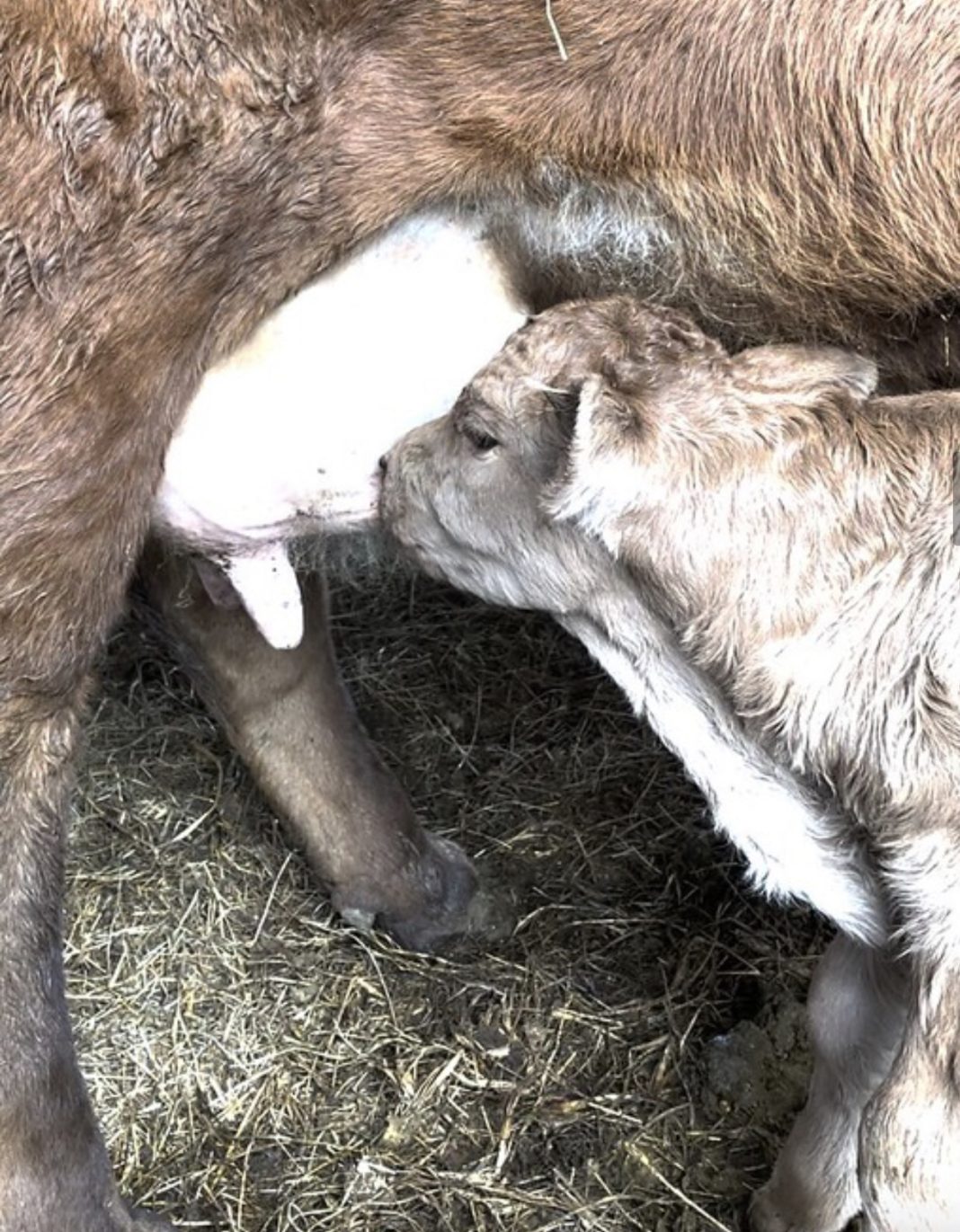By Mary Hightower
U of A System Division of Agriculture
Making sure cattle have enough food and water during an ice storm is hard enough, but being a midwife too adds a whole new layer of challenge.
That’s just what Dana Stewart wound up doing Tuesday morning, when one of the cows beat her due date. Stewart’s family helps manage the Martin Cattle Company of Judsonia. She’s part of the sixth generation working this White County farm, which raises Gelbveih, Balancer and Hereford cattle.
Two rounds of wintry weather Monday through Wednesday closed school districts and offices across Arkansas.
“When we talk about managing cattle in this kind of weather, the first thing that comes to mind is just knowing your cattle,” she said Wednesday. “This cow wasn’t quite due, but she was definitely on our radar. I had gone to check on her the night before when the sleet was really coming down.”
In the midst of the sleet shower, she found the cow, sheltered with the herd in a thicket of trees. She had given birth to a set of twins, but only one, a heifer, survived.
“The reality of ranching is that despite our best efforts, nature sometimes takes a different course,” Stewart said.
Into recovery mode
At that point, “you jump into recovery mode,” she said. “The calf we brought in — she was chilled, but she had a brightness in her eye.”
After a ride in the back of a side-by-side, they brought her into a shop with a kerosene heater.
“We warmed her up slowly and she perked up,” Stewart said. “We fed her some colostrum with a bottle, and after that, she was ready to go back to the cow.”
Colostrum is the first milk produced by mammals after giving birth. It is of special importance because it is full of antibodies, ready to protect the youngster.
Rescuing calves this way does carry some risk that the cow may not accept a calf from which it has been separated.
“You want to get the calf back to the cow as quick as you can, so the cow is willing to take her back,” Stewart said.
With a third round of icy precipitation expected on Wednesday, the calf was spending one more night inside.
“I hated to turn the calf and cow out of the barn knowing we were going to get another round,” Stewart said. “Another night in the barn and she will go out in the pasture with the rest of the herd.”
Keeping a farm going for as long as Stewart’s has, takes a lot of planning.
“Knowing the cattle and knowing you have a good management plan in place means if there are issues, you know how to react and you’re prepared,” she said.
No snow days
“There are no snow or ice days for livestock producers,” said Brian Haller, White County extension staff chair for the Division of Agriculture.
“When cold temperatures in combination with wet and icy precipitation, it is important to provide the needed energy in the form of feed to livestock,” he said. “A cow’s energy requirement increases 1.5 times when cold and wet and feed consumption increases 1.3 percent for every 5 degrees Fahrenheit decrease in temperature.”
One more round
Icy weather prompted the Cooperative Extension Service to postpone Arkansas Forage and Grassland Council’s Winter Forage Conference scheduled for Thursday. The meeting will be rescheduled, according to John Jennings, professor and extension forage specialist for the University of Arkansas System Division of Agriculture.
The National Weather Service at Little Rock said a third round of icy precipitation was expected to mean ice accumulations of .25 to .5 inches for central and southern Arkansas and an ice storm warning was in effect through noon on Thursday. Temperatures were expected to rise into the 40s on Friday and Saturday.
To learn about extension programs in Arkansas, contact your local Cooperative Extension Service agent or visit www.uaex.uada.edu. Follow us on Twitter and Instagram at @AR_Extension. To learn more about Division of Agriculture research, visit the Arkansas Agricultural Experiment Station website: https://aaes.uada.edu. Follow on Twitter at @ArkAgResearch. To learn more about the Division of Agriculture, visit https://uada.edu/. Follow us on Twitter at @AgInArk.
About the Division of Agriculture
The University of Arkansas System Division of Agriculture’s mission is to strengthen agriculture, communities, and families by connecting trusted research to the adoption of best practices. Through the Agricultural Experiment Station and the Cooperative Extension Service, the Division of Agriculture conducts research and extension work within the nation’s historic land grant education system.
The Division of Agriculture is one of 20 entities within the University of Arkansas System. It has offices in all 75 counties in Arkansas and faculty on five system campuses.
The University of Arkansas System Division of Agriculture offers all its Extension and Research programs and services without regard to race, color, sex, gender identity, sexual orientation, national origin, religion, age, disability, marital or veteran status, genetic information, or any other legally protected status, and is an Affirmative Action/Equal Opportunity Employer.






